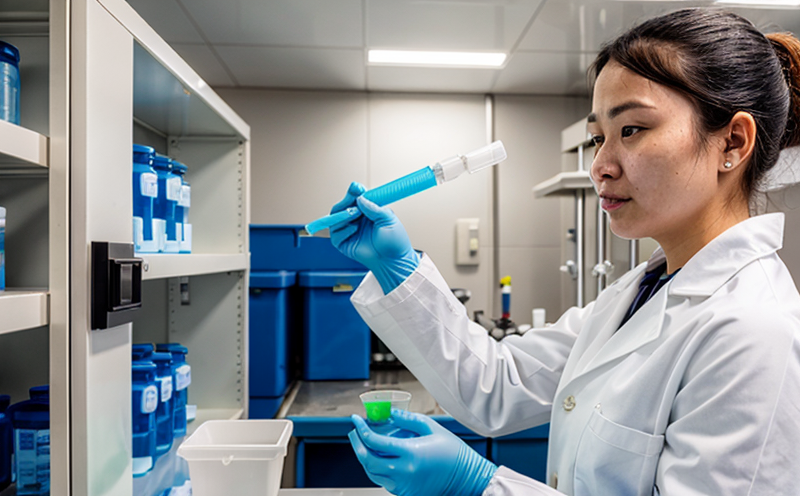USP Coliform Detection Testing
The United States Pharmacopeia (USP) Coliform Detection Testing is a critical analytical procedure used to assess the presence of coliform bacteria in pharmaceutical products. This testing method ensures that batches meet stringent quality and safety standards set forth by USP monographs, which are recognized worldwide for their role in ensuring drug product quality.
Coliforms are a group of Gram-negative, facultatively anaerobic, rod-shaped, non-spore-forming bacteria capable of fermenting lactose with the production of gas or acid within 48 hours at 35°C. They include strains of Escherichia coli (E. coli), Enterobacter cloacae, Klebsiella pneumoniae, and others. The presence of coliforms can indicate fecal contamination and thus potential microbial contamination in pharmaceutical products.
USP Coliform Testing is essential for the following reasons:
- To ensure product safety and quality
- To comply with regulatory requirements set by the US Food and Drug Administration (FDA)
- To maintain consumer trust and confidence in the drug product
- To prevent potential health risks associated with microbial contamination
The testing involves several steps, including:
- Sampling of the pharmaceutical product
- Preparation of the sample for inoculation into selective media
- Inoculation and incubation under specific temperature conditions (35°C)
- Observation for gas production or turbidity in the selective medium, which indicates coliform presence
- Confirmation using an additional test such as the Violet Red Bile Agar (VRBA) method if initial results are positive
The USP monographs provide detailed guidelines on sample preparation and testing procedures. Adherence to these standards ensures consistency and reliability in the detection of coliforms.
| Step | Description |
|---|---|
| Sampling | Selective sampling based on product type and batch size. Samples should be representative of the entire batch. |
| Preparation | Inoculate the sample into lactose broth or other selective media as per USP guidelines. |
| Inoculation | Inoculate the prepared samples under aseptic conditions at 35°C for 48 hours. |
| Observation | Observe for gas production or turbidity in lactose broth. Positive results are confirmed using VRBA. |
| Reporting | The final report includes details of the test procedure, observed results, and compliance with USP standards. |
This method is widely used by pharmaceutical manufacturers to ensure that their products meet stringent quality control measures. The testing process not only ensures product safety but also helps in maintaining a high standard of manufacturing practices.
Scope and Methodology
| Step | Description |
|---|---|
| Sampling | Selective sampling based on product type and batch size. Samples should be representative of the entire batch. |
| Preparation | Inoculate the sample into lactose broth or other selective media as per USP guidelines. |
| Inoculation | Inoculate the prepared samples under aseptic conditions at 35°C for 48 hours. |
| Observation | Observe for gas production or turbidity in lactose broth. Positive results are confirmed using VRBA. |
| Reporting | The final report includes details of the test procedure, observed results, and compliance with USP standards. |
The scope of this testing ensures that pharmaceutical products do not contain potentially harmful coliform bacteria. The methodology strictly adheres to international standards set by USP, FDA, and other regulatory bodies. This approach guarantees consistent and reliable results across all batches tested.
Benefits
- Ensures product safety and compliance with regulatory requirements
- Prevents potential health risks associated with microbial contamination
- Maintains consumer trust and confidence in the drug product
- Helps pharmaceutical manufacturers meet stringent quality control measures
- Facilitates consistent and reliable testing results across all batches
- Aids in maintaining high standards of manufacturing practices
- Supports adherence to international standards set by USP, FDA, and other regulatory bodies
- Provides peace of mind for quality managers, compliance officers, R&D engineers, and procurement teams
The benefits of USP Coliform Detection Testing are far-reaching. It not only ensures that the pharmaceutical products are safe but also helps in maintaining a high standard of manufacturing practices. This testing method is essential for preventing potential health risks associated with microbial contamination.
Use Cases and Application Examples
The USP Coliform Detection Testing is widely used in various scenarios within the pharmaceutical industry. Here are some examples:
- Raw Material Testing: Ensuring that raw materials such as excipients, APIs, and other components do not contain coliforms.
- Intermediate Product Testing: Checking intermediate products for microbial contamination before proceeding to the next step in the manufacturing process.
- Finished Product Testing: Verifying that final products meet quality standards by detecting any potential microbial contamination.
- Routine Quality Control: Conducting regular tests as part of routine quality control measures to ensure ongoing compliance with USP standards.
In addition, this testing method is crucial for pharmaceutical companies undergoing regulatory audits. It provides evidence that the company adheres to strict quality control measures and can help in passing inspections by regulatory authorities.





